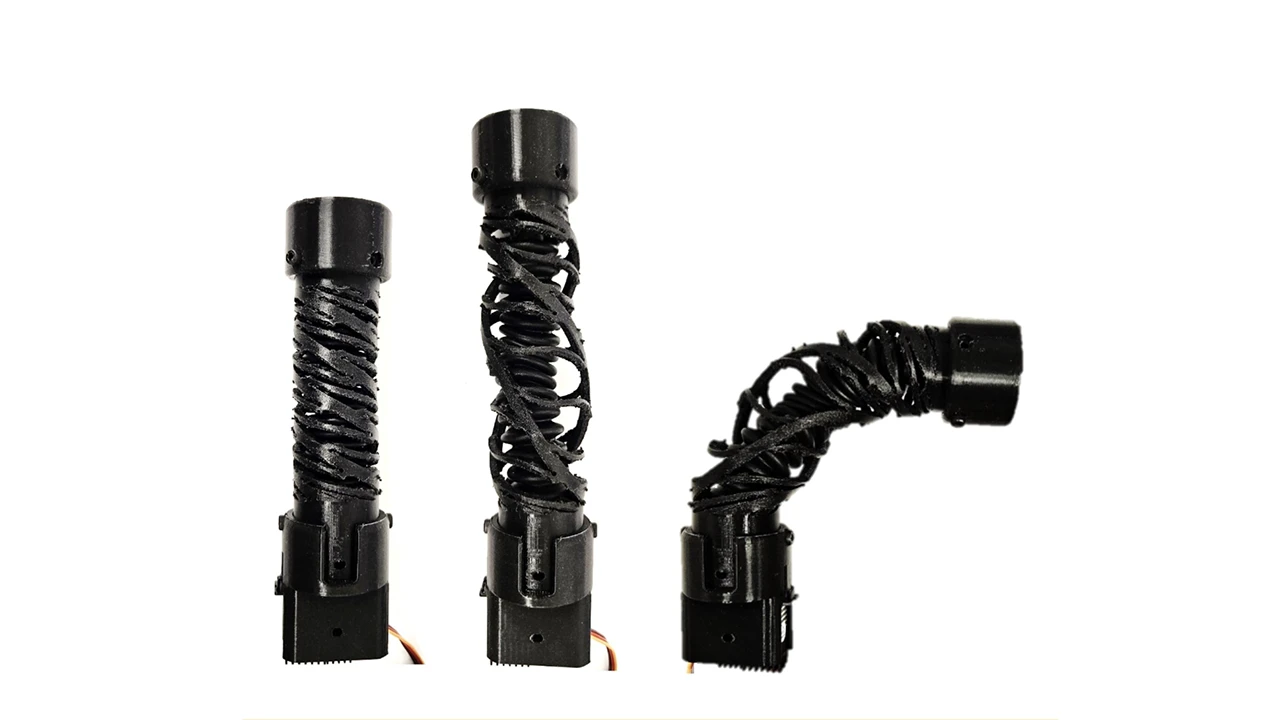
Ryan Truby/Taekyoung Kim from Northwestern University
Artificial Muscles that Mimic Human Anatomy
Researchers at Northwestern University have created a soft and flexible device that enables robots to mimic human muscle movement. This new technology, called a soft actuator, represents a significant advancement in the field of robotics.
In their recently published study, the research team explains how conventional robotic actuators are typically stiff and expensive. These characteristics can limit their safety, especially in environments where humans and robots interact. The newly developed soft actuator, on the other hand, is 3D-printed from a common rubber, making it inexpensive (approximately $3).
Ryan Truby, the lead researcher, stated “If a soft robot were to collide with a person, the impact would be significantly less painful compared to a hard, rigid robot. Our actuator makes robots more suitable for environments focused on human interaction. Additionally, their low cost allows for broader applications that were previously too expensive to consider.”
The design of the new actuator draws inspiration from human muscles, which contract and stiffen simultaneously to facilitate movement and exert force.
Truby added, “When you twist the lid off a jar, your muscles tighten and stiffen to apply the necessary force. This aspect of muscle function has been overlooked in soft robotics. Most soft actuators become more pliable when in use, but our design actually stiffens during operation.”
The new actuator achieves this by utilizing 3D-printed “handed shearing auxetics” (HSAs) made from rubber. These HSAs expand and extend when twisted, providing the actuator with the ability to transmit force effectively. This feature was lacking in previous soft robots.
To showcase the actuator’s capabilities, the researchers created a worm-like crawling robot and an artificial bicep. The crawling robot, measuring just 26 centimeters, adeptly navigated confined spaces, while the artificial bicep successfully lifted a 500-gram weight 5,000 times in succession.
Researchers are optimistic about future enhancements. While the current prototype demonstrates the feasibility of the concept, future research will focus on improving the actuator’s performance. Researchers aim to enhance its speed and strength to broaden its range of potential applications


 Previous Story
Previous Story

 Latest articles
Latest articles 

Leave a Comment
Cancel